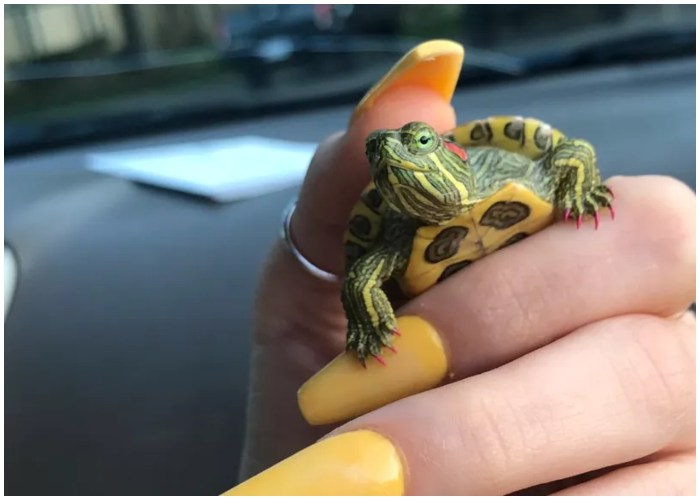Owning a turtle can be a fascinating and rewarding experience, but it’s not as simple as it may seem. Turtles require special care, a suitable environment, and plenty of maintenance. They aren’t as interactive as dogs or cats and don’t enjoy being handled, but they can make captivating pets to watch and learn from. If you’re considering bringing a turtle into your home, it’s essential to understand their specific needs and whether a turtle is the right pet for your lifestyle. Here’s a comprehensive guide on what you need to know about choosing, caring for, and living with a pet turtle.
Types of Pet Turtles: Which One is Best for You?
Not all turtles are suited for every household. The most common types of pet turtles are the Box, Red-eared Slider, Painted, Reeve’s, Wood, and Caspian Pond turtles. Each type has different habitat preferences and needs, so choose carefully based on your environment. Box turtles, for example, require a mostly dry habitat with a small wading area, while Red-eared Sliders thrive in aquariums with ample swimming space. Additionally, turtles vary in size, with adult shells measuring between 6 to 12 inches, and they have long lifespans—some live over 25 years, and Box turtles can even reach 80 years.

Turtle vs. Tortoise: Understanding Their Differences
Turtles and tortoises may seem similar, but their habitats and care requirements differ significantly. Turtles enjoy water habitats or ponds, whereas tortoises prefer dry, arid environments. For example, a Red-eared Slider requires an aquarium with both water and basking spots, while a Box turtle can thrive with a small pool and plenty of dry land. If you’re considering outdoor housing, be mindful of your climate; a Russian tortoise might love Arizona’s dry heat but struggle in Maine’s humidity. Keeping turtles indoors can be easier to regulate but requires a spacious tank, ideally starting with a 40-gallon tank for juveniles and moving to a 75-gallon tank as they grow.
Special Considerations for Families with Kids
Turtles aren’t typically suited for households with young children due to the risk of salmonella, a bacteria they can carry. Kids under five and immune-compromised individuals are more susceptible to getting sick from handling turtles. For families with older children, teach them to wash their hands thoroughly after any interaction with the turtle or its habitat. Additionally, turtles are best observed rather than played with, as frequent handling can cause them stress and discomfort.
Essential Care Tips for Pet Turtles
Caring for a pet turtle involves more than just setting up a tank. Here are key steps to keep your turtle happy and healthy:
- Set Up a Suitable Habitat
A turtle’s habitat should be spacious, with at least 40 gallons for juvenile turtles. The tank should include a basking area with a heat lamp and separate areas for swimming and resting. The setup depends on the turtle species, so research their specific needs to create a comfortable environment. - Control Temperature Carefully
Turtles are cold-blooded, meaning they rely on their environment to regulate body temperature. Maintain tank temperatures between 60 and 90°F, with a basking light to warm the air. Aquatic turtles benefit from heated water, while others may need cooler nighttime temperatures. A consistent temperature ensures your turtle stays healthy and active. - Understand Hibernation Needs
Turtles have different hibernation needs, with some remaining inactive for weeks or even months. Research your turtle’s hibernation pattern and prepare a safe environment, whether it’s using a tank in a cool area or setting up an outdoor hibernation spot. Some experienced owners even allow turtles to hibernate in refrigerators for precise temperature control, but consult a veterinarian before attempting this method. - Provide a Balanced Diet
A turtle’s diet is varied and may include fresh vegetables, bugs, or commercial turtle food. Each turtle type has unique dietary needs; for instance, Red-eared Sliders enjoy leafy greens, worms, and fish. Offer a mix of lettuce, bugs, and specially formulated turtle food to meet their nutritional needs. Most pet stores carry turtle food, but be sure to choose products that match what your turtle would naturally eat. - Regularly Clean the Tank
Turtles produce waste that can quickly dirty a tank, so frequent cleaning is essential to avoid odors and maintain hygiene. Use a filtration system for aquatic turtles and change the water regularly. The tank should be scrubbed down, and the substrate replaced as needed to ensure a fresh and clean environment. Proper filtration is crucial to prevent bacteria buildup and keep your turtle healthy. - Limit Handling to Avoid Stress
Turtles are best appreciated from a distance. Frequent handling can cause them significant stress, and they don’t enjoy being touched or held. Rough handling can also injure turtles, even though they have hard shells. Treat your turtle as an animal to observe, not a pet to play with, and educate any family members on the importance of gentle care. - Practice Good Hygiene
Turtles can carry salmonella, so always wash your hands after handling them or cleaning their enclosure. This is especially important if you have other pets or young children in the home. Good hygiene minimizes the risk of bacterial transfer and keeps everyone healthy, including your turtle.

Fun Facts About Turtles
Turtles are fascinating creatures with many unique traits. Here are some fun facts that highlight their interesting biology:
- Turtles Hibernate for Extended Periods: Some turtles can hibernate for up to nine months each year, depending on the climate and species.
- They’re Ancient Survivors: Turtles have existed for over 200 million years, making them one of the oldest reptile groups on Earth.
- Incredible Longevity: The oldest recorded tortoise, an Indian Ocean Giant Tortoise, lived for 152 years in captivity.
- Global Presence: Turtles live on six continents, with Antarctica as the only exception.
- Unique Shell Composition: A turtle’s shell is composed of 60 different bones, fused together to form their protective armor.
Is a Turtle Right for Your Home?
Owning a turtle requires time, patience, and resources. From setting up a suitable habitat to maintaining hygiene, turtles need consistent care that can be more involved than many people initially realize. However, with the right setup and commitment, turtles can be incredibly rewarding pets. If you’re prepared to provide the right environment, enjoy observing wildlife, and can commit to the long lifespan of these remarkable animals, a turtle might be the perfect pet for you. Make sure to research thoroughly and consider all aspects of turtle care before bringing one into your home.